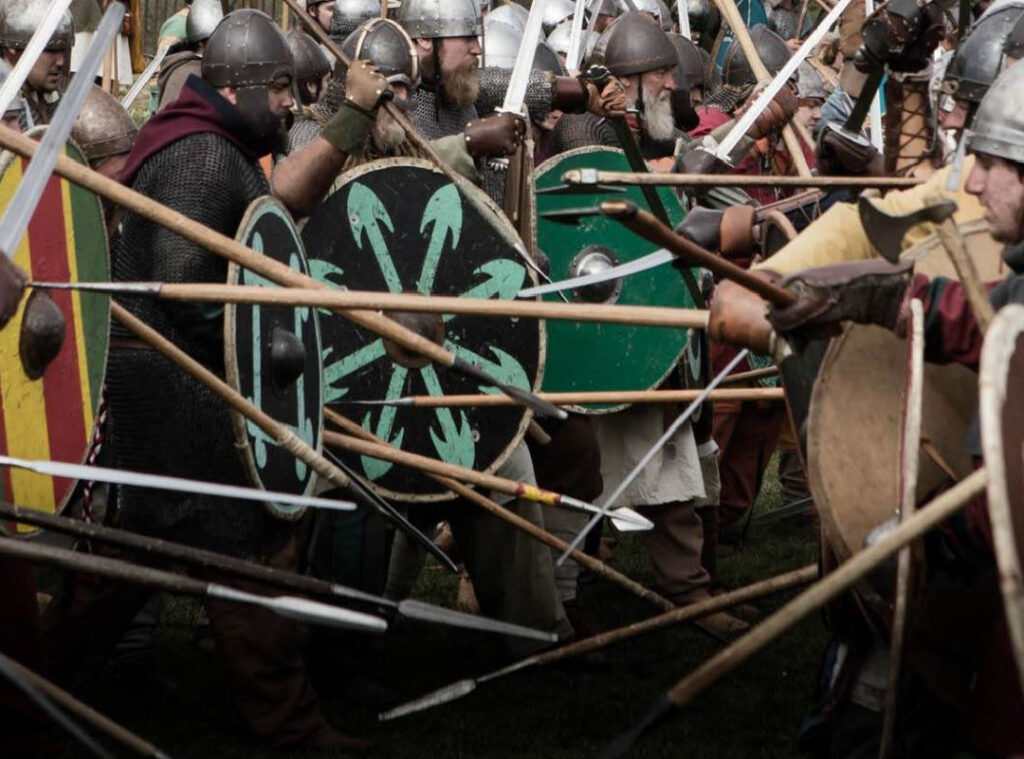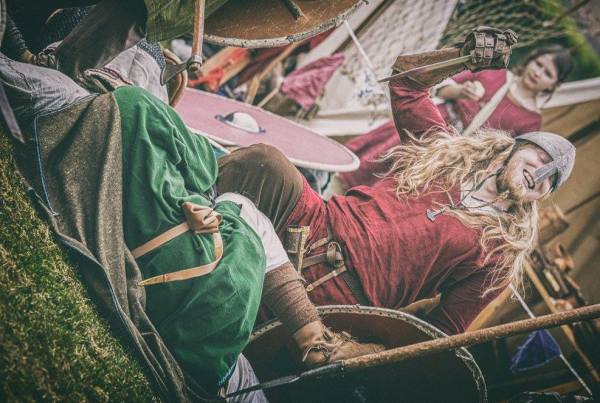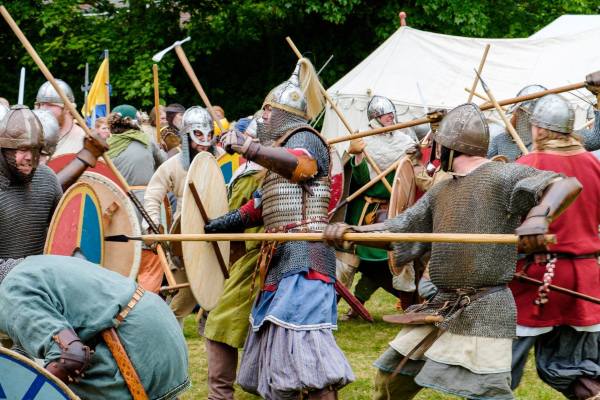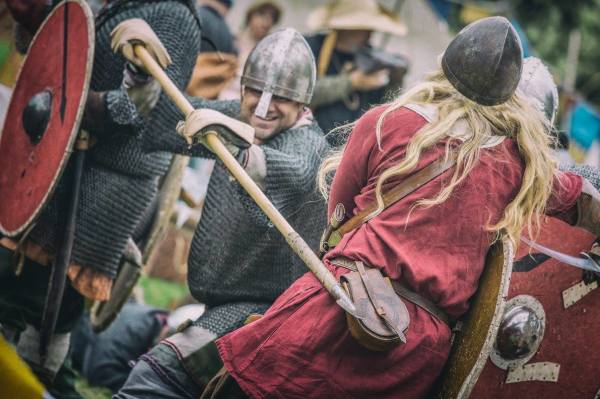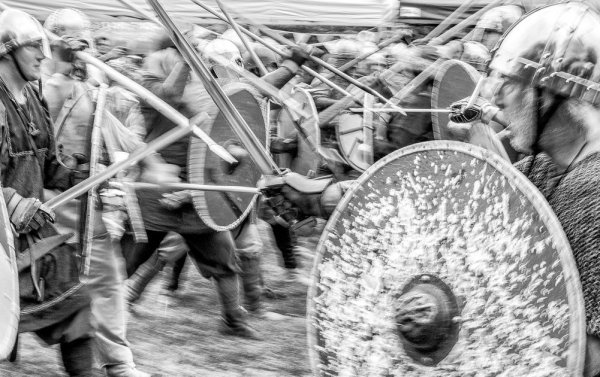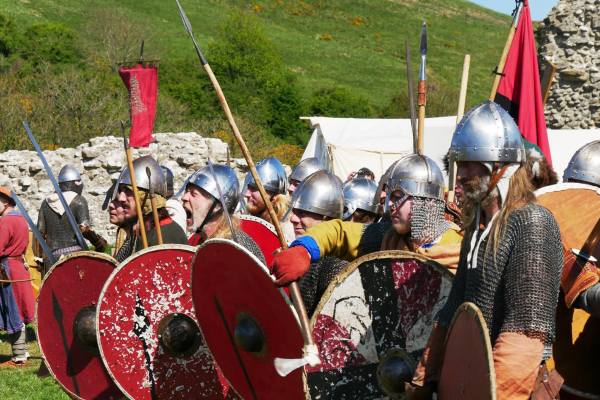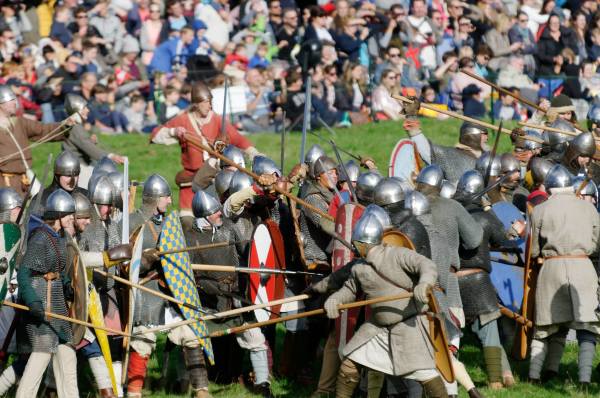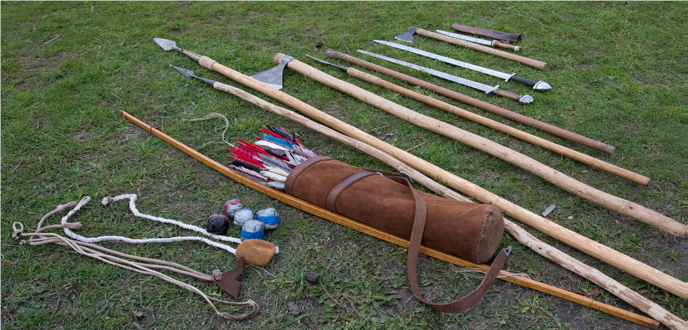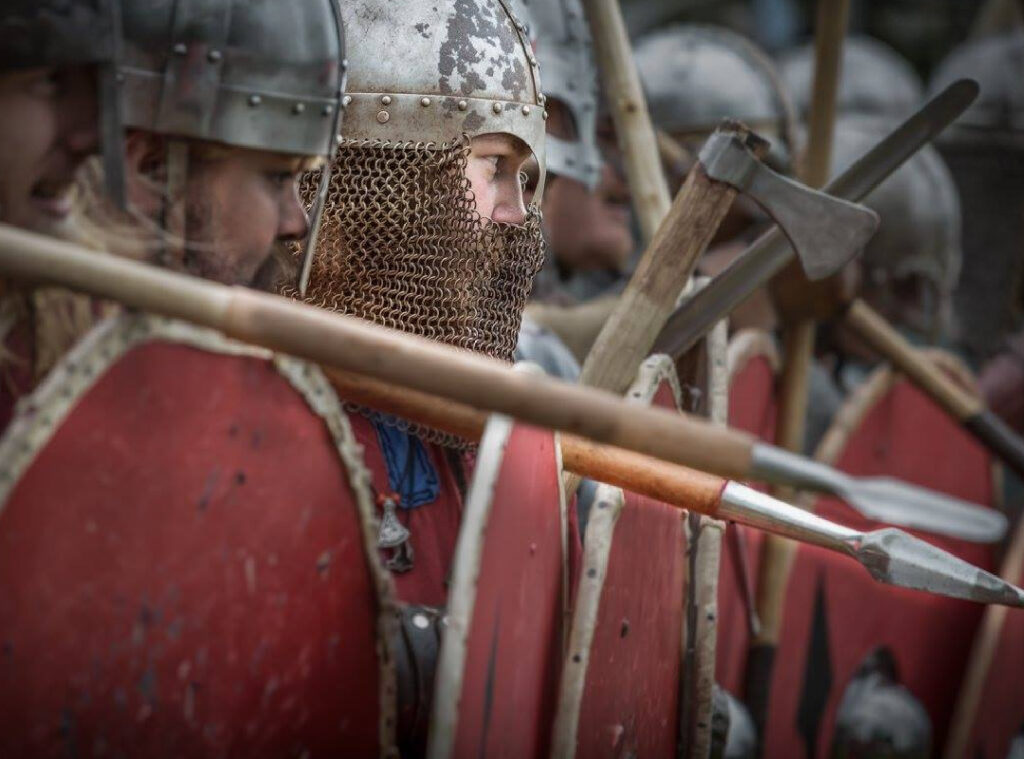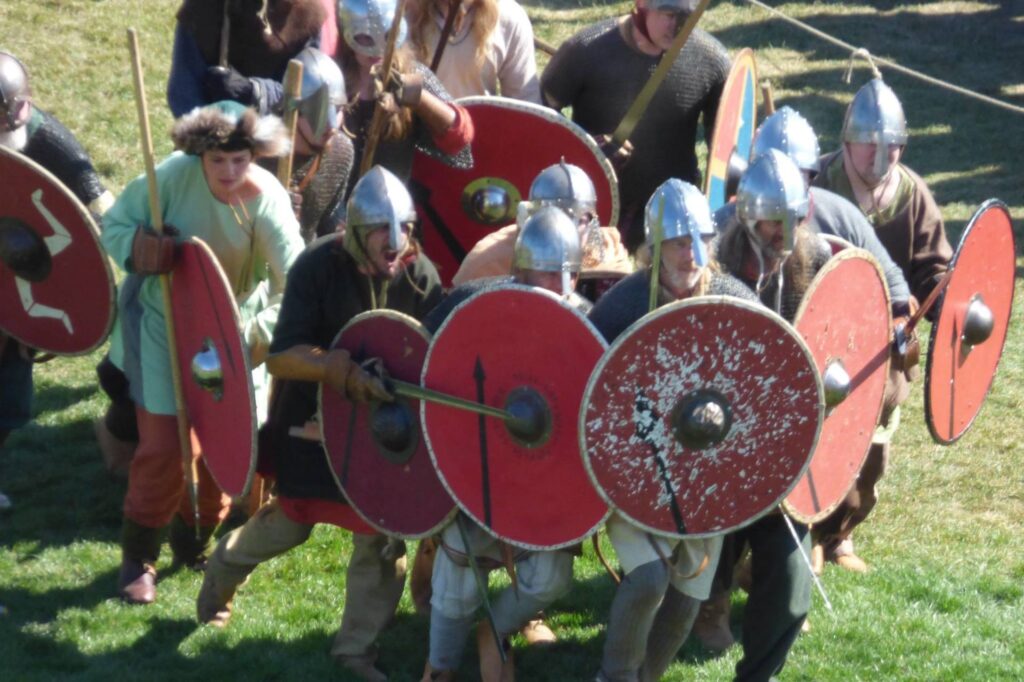Viking warfare is at the heart of what we do. From sword and shield, to spear and dane axe; archery, javelin and sling; the song of the shield wall and the discipline of the dark age warrior – these skills we train for and demonstrate upon the field of battle. In order to bring dark-age battles to life, safely and skilfully, we train regularly in a range of different arms and armour.
Something we’d like to emphasise is that everyone who takes the field must have passed a rigorous safety test and certification before they are allowed to use their weapon of choice. This is a martial art and we take safety seriously.

